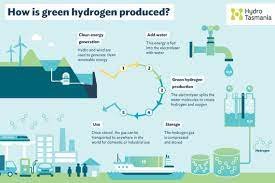
Prepare IAS Coaching
Current Affairs

Title : UV-C Technology
Date : Nov 22, 2021
Description :
GS III
Topic à Scientific Inventions relating to Bio-Conservation, Environmental Conservation.
- Context:
- One of the most effective methods for disinfecting water is UV-C water purification. Special "germicidal" UV-C lamps that emit high-intensity ultraviolet light purify the water without the use of harsh chemicals that are damaging to the environment are used in this procedure.
- What is UV radiation and how does it work:
- The region of the electromagnetic spectrum between X-rays and visible light is known as UV radiation
Sunlight is the most prevalent source of UV radiation, which emits three types of UV rays:
- Some important facts:
- UVA photons have the longest wavelengths, whereas UVB and UVC rays have the shortest.
- While UVA and UVB rays pass through the atmosphere, the Earth's ozone layer absorbs all UVC and some UVB rays. As a result, the majority of UV rays you encounter are UVA, with a tiny proportion of UVB.
- What is the purpose of it:
- UV rays are commonly employed to kill bacteria and other microbes.
- UV-C, commonly known as ultraviolet germicidal irradiation (UVGI), is a disinfection treatment that kills or inactivates bacteria by destroying their nucleic acids and altering their DNA, rendering them unable to perform important biological tasks and stopping their replication.
- UVGI is used in a range of disinfection applications, including food, air, and water.
- Is it suitable for human consumption:
- The device was created exclusively to sterilise non-living objects, according to the researchers. As a result, the UV-C radiation employed in this device could be damaging to living beings' skin and eyes.
- Prelims Hot-Link:
- A diagram illustrating the electromagnetic spectrum.
- In regards to UV rays.
- Types & Features.
- Source à https://www.news-medical.net/news/20211117/Efficacy-of-UVC-light-prototype-devices-for-inactivating-SARS-CoV-2.aspx
